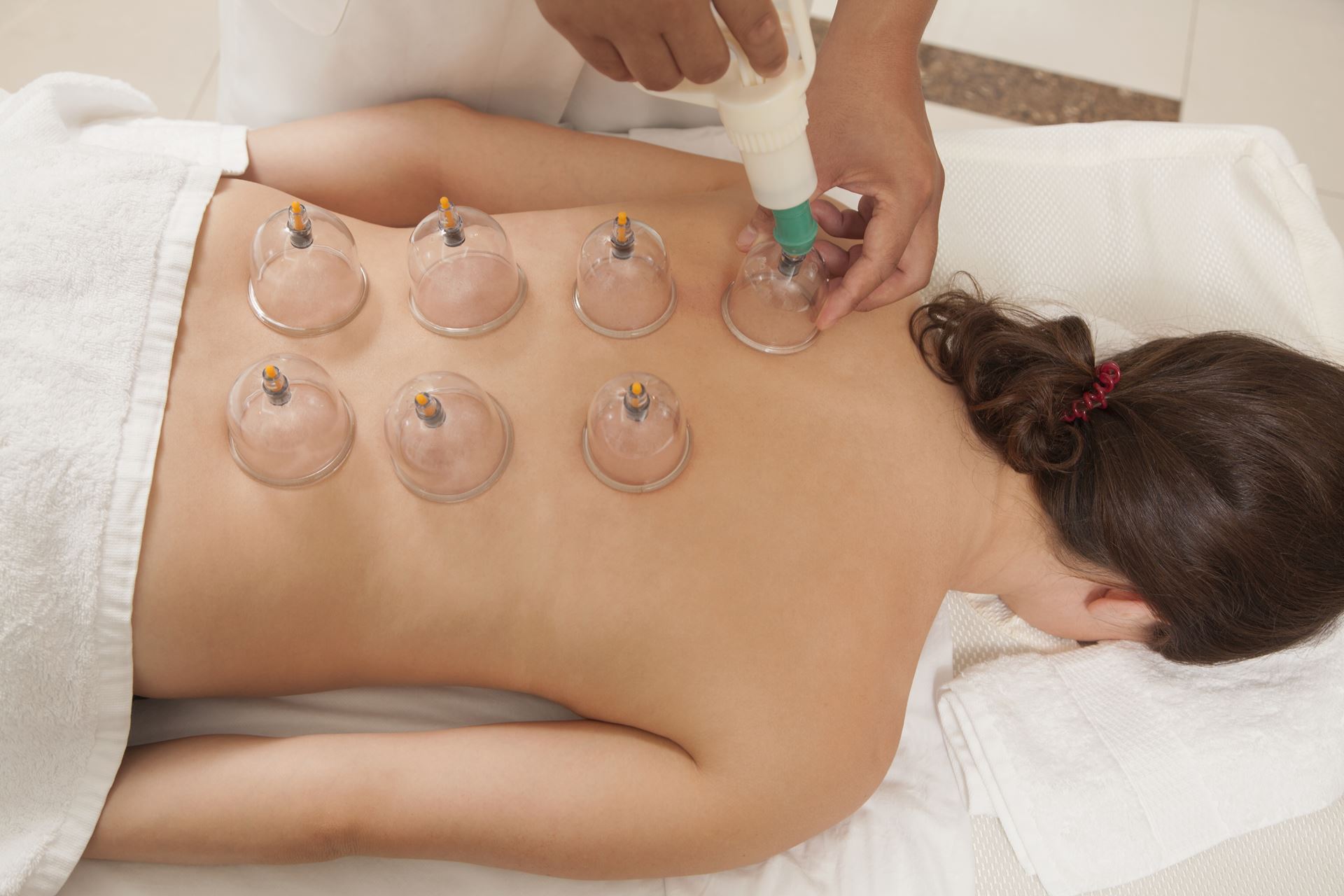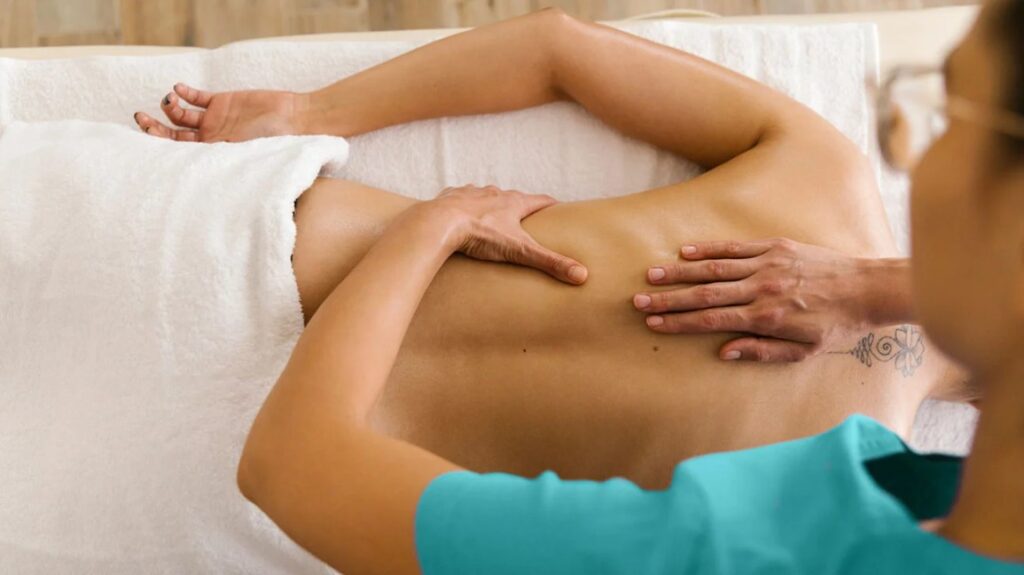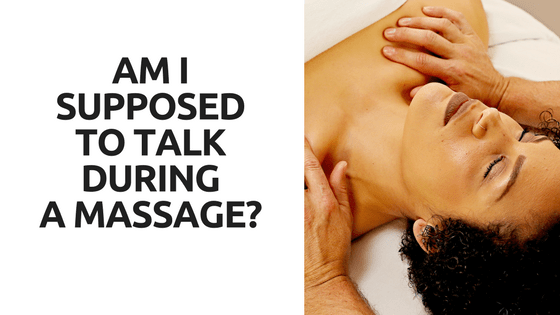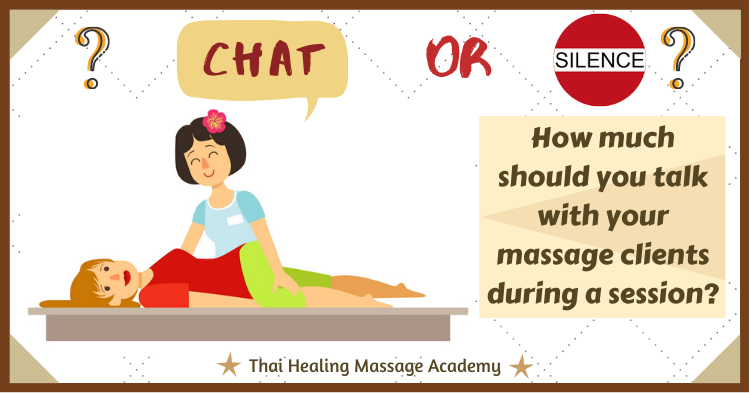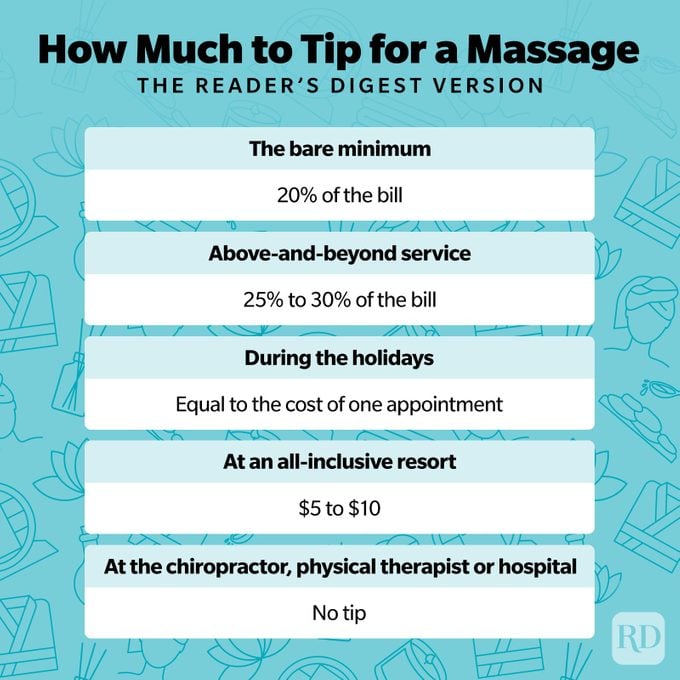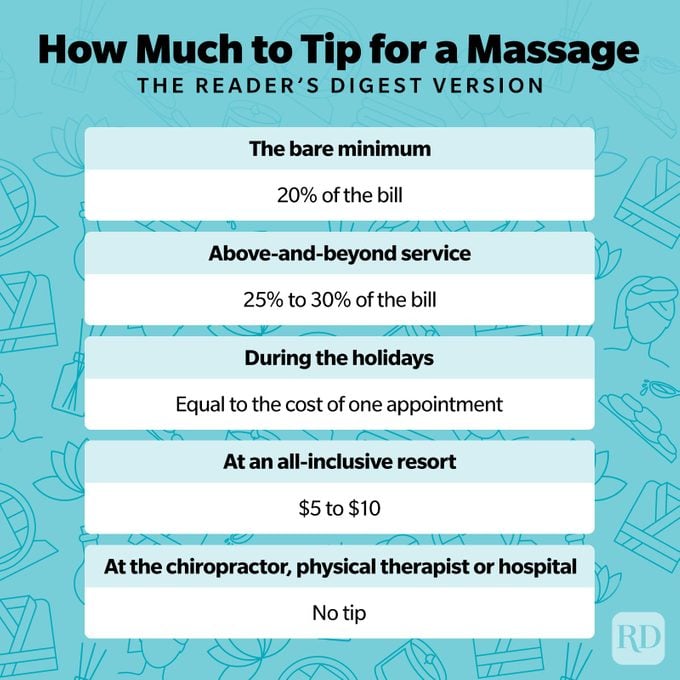Imagine this scenario: you’re lying on the massage table, feeling relaxed and at ease, as the skilled hands of a professional massage therapist work their magic on your tense muscles. But then, unexpectedly, you feel a surge of excitement. What happens next? In this article, we will explore the protocol and practices that massage therapists follow when faced with a situation where a male client becomes aroused during a massage. While it may be an uncomfortable topic to discuss, it’s essential to understand how trained professionals handle these situations, ensuring a safe and respectful environment for all clients.
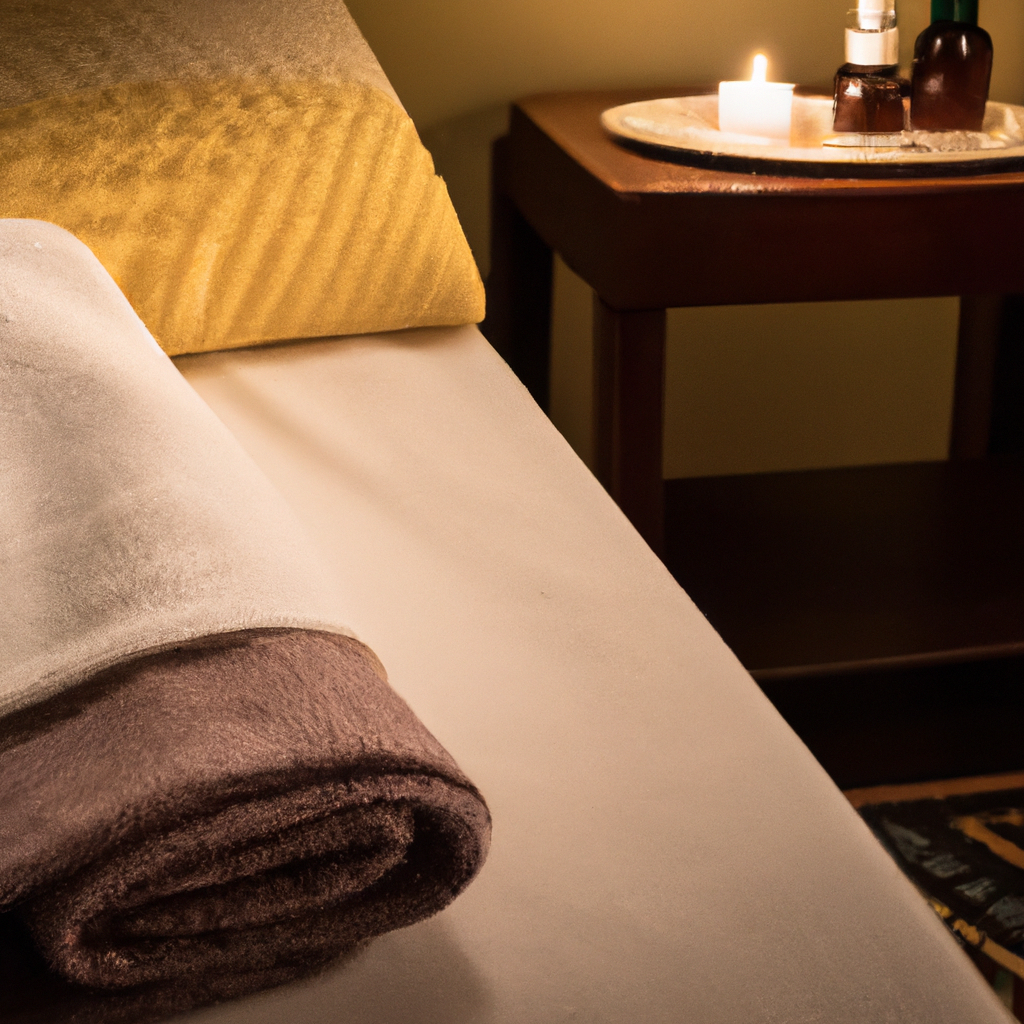
Privacy and Professionalism
Maintaining Privacy
As a massage therapist, one of your primary responsibilities is to maintain the privacy of your clients. This includes respecting their personal boundaries and ensuring that their confidentiality is upheld throughout the session. To maintain privacy, it is crucial to create a safe and private environment where clients feel comfortable and secure.
To uphold privacy, you can start by ensuring that you have a designated private and comfortable space for massages. This can be a separate room or an area away from prying eyes. Additionally, you should always maintain a professional demeanor and refrain from discussing sensitive client information with others.
Professional Conduct
Maintaining professionalism is essential for massage therapists to establish trust and credibility with their clients. Professional conduct involves adhering to ethical principles, displaying appropriate behavior, and having a clear understanding of your scope of practice.
To demonstrate professionalism, always arrive on time for your appointments and dress appropriately in clean, professional attire. Maintain clear communication with your clients, establishing their comfort level and expectations before beginning the massage. It is also important to conduct yourself in a courteous and respectful manner, ensuring that your client feels valued and heard.
Clear Boundaries
Establishing clear boundaries is crucial for both privacy and professionalism during a massage. Boundaries help define the expectations and limitations between the client and the therapist. These boundaries may pertain to physical touch, conversation topics, or personal space.
To set clear boundaries, communicate openly with your clients about what they can expect during the session. Let them know the areas of their body that will be worked on and ask if they have any specific areas or techniques they would like you to avoid. This open dialogue will establish trust and ensure that both parties are comfortable throughout the massage.
Preparation and Communication
Client Education
Educating your clients about the massage process is an essential aspect of preparing them for a session that respects their privacy and maintains professionalism. Providing clients with information about the benefits of massage, the techniques you use, and what they can expect during the session can help alleviate any concerns or apprehensions they may have.
During the intake process or before the massage session, take the time to explain the benefits of massage therapy and how it can address their specific needs. This not only helps set realistic expectations but also gives them the opportunity to ask any questions or voice any concerns they may have.
Informed Consent
Obtaining informed consent from your clients is crucial to maintaining their privacy and respecting their autonomy. Informed consent involves providing clear and comprehensive information about the treatment, any potential risks or benefits, and allowing the client to make an informed decision about proceeding with the massage.
Before starting the massage, discuss any medical conditions or contraindications the client may have and ensure they understand the potential risks or limitations. Furthermore, inform them of their right to change or stop the massage at any time if they feel uncomfortable. Obtaining informed consent establishes trust, respects their privacy, and ensures their ability to make decisions regarding their own body.
Establishing Comfort Level
Establishing your client’s comfort level is essential to maintaining their privacy and professionalism throughout the massage. Each individual may have different preferences when it comes to pressure, temperature, or even conversation during the session. Therefore, it is important to communicate and gauge their comfort level before and during the massage.
Before starting the session, ask your client about their preferences regarding pressure, temperature, and any specific areas they would like you to focus on or avoid. Throughout the massage, periodically check in with them to ensure their comfort and adjust your approach accordingly. This ongoing communication helps create a safe and comfortable environment, ensuring that their privacy and boundaries are respected.
Recognizing and Responding to Arousal
Normal Bodily Responses
As a massage therapist, it is crucial to understand that arousal is a normal bodily response that can occur during a massage, regardless of gender or sexual orientation. Arousal is often a physiological reaction and does not necessarily reflect any inappropriate intentions or desires.
Understanding and normalizing this response will enable you to respond appropriately without compromising your client’s privacy or professionalism. It is important to remain calm and composed, reminding yourself that arousal is a normal occurrence and not a reflection of your or your client’s conduct.
Observation Skills
Developing keen observation skills is essential for recognizing any changes or unusual behaviors during a massage. While you must maintain your focus on the massage techniques, it is important to be aware of your client’s reactions and body language.
Pay attention to signs of discomfort or tension that could indicate arousal or any other emotional response. These signs may include changes in breathing patterns, muscle tension, or alterations in the client’s demeanor. Observing these cues can help guide your response and ensure that the client’s privacy and boundaries are respected.
Self-Awareness
Maintaining self-awareness is vital when responding to arousal during a massage. It is normal to feel a range of emotions, such as surprise or unease, when faced with unexpected reactions from clients. However, it is crucial to manage these emotions and respond in a professional and empathetic manner.
By staying self-aware, you can consciously choose your words and actions to ensure that your response is respectful and considerate. If you find yourself feeling uncomfortable or unsure about how to proceed, take a moment to collect your thoughts and consider seeking guidance from a trusted colleague or supervisor.
Adjusting Techniques and Pressure
Modifying Techniques
Modifying massage techniques can be an effective way to address specific concerns or avoid sensitive areas while maintaining privacy and professionalism. By adjusting your techniques, you can respect the client’s boundaries and ensure their comfort during the session.
If a client becomes aroused or expresses discomfort during a particular technique, be prepared to modify it accordingly. For example, if a particular stroke seems to elicit an unwanted response, switch to a different technique or employ a lighter touch. Demonstrating flexibility in your techniques demonstrates your commitment to their comfort and reinforces your professionalism.
Avoiding Sensitive Areas
As a massage therapist, it is essential to be mindful of sensitive areas that may elicit an unintended physiological response in clients. While these areas vary from person to person, common examples include the inner thigh, gluteal region, or the chest area.
To respect your client’s privacy and maintain professionalism, communicate with them about their comfort level regarding sensitive areas before the massage. If they express any concerns or preferences, ensure that you avoid those areas during the session. By honoring their boundaries, you create a safe and respectful environment that protects their privacy.
Communication with Client
Open and ongoing communication with your client is key to adjusting techniques and pressure during the massage. Encourage your client to provide feedback during the session, both verbally and non-verbally. This ensures that you are meeting their needs, avoiding sensitive areas, and adjusting pressure to their comfort level.
Periodically check in with your client to ensure their comfort and adjust your techniques or pressure accordingly. Make it clear that they can communicate with you if they have any concerns or discomfort during the massage. This open communication fosters trust and ensures that their privacy and boundaries are upheld.

Offering Support and Reassurance
Maintaining Calmness
Maintaining a calm and composed demeanor is crucial when responding to unexpected situations, such as arousal during a massage. Reacting with panic, shock, or judgment can further escalate the situation and compromise the client’s privacy and professionalism.
If you observe arousal, remind yourself that it is a normal response and focus on remaining calm. By maintaining your composure, you can better support your client and respond with professionalism and empathy. Your ability to stay calm will help reassure the client that their privacy is respected and that you will handle the situation with utmost professionalism.
Verbal Acknowledgment
When faced with a situation involving arousal, it may be helpful to provide a verbal acknowledgment to reassure the client that you have noticed their comfort and are committed to respecting their privacy. A simple statement like, “I understand that everyone’s body can react in different ways during a massage, and I want to assure you that your privacy and comfort are my utmost priority,” can help alleviate any embarrassment or concern the client might have.
Verbal acknowledgments demonstrate your awareness and empathy while maintaining professionalism. By addressing the situation openly and directly, you can help diffuse any potential discomfort or tension, ensuring that the client feels supported and respected.
Providing Assurance
Offering reassurance throughout the massage is vital to maintaining professionalism and upholding privacy. Remind your client that their comfort and satisfaction are your top priorities, and assure them that you will make any necessary adjustments to ensure their privacy and well-being.
Reiterate that the massage is a safe and judgment-free environment, where their personal boundaries are respected. Assure them that any physical response they experience is normal and that you are trained to handle these situations with professionalism and discretion. By providing reassurance, you can help the client feel at ease, enhancing their overall experience.
Reaffirming Boundaries
Professional Demeanor
Maintaining a professional demeanor throughout the massage is crucial when reaffirming boundaries with the client. A professional demeanor includes using appropriate language, maintaining boundaries, and avoiding any actions that may blur the lines between therapeutic touch and personal interaction.
Refrain from engaging in conversations unrelated to the massage and avoid sharing personal information unless it promotes a therapeutic relationship. By upholding a professional demeanor, you reinforce the clear boundaries between your role as a massage therapist and the client’s role as a recipient of your services.
Redirecting Focus
If a client becomes uncomfortable or exhibits behavior that suggests they are crossing boundaries, redirecting their focus can be an effective strategy. For example, if a client makes inappropriate comments or tries to engage in non-therapeutic conversation, subtly shift the conversation back to the massage or related topics.
Redirecting the client’s focus helps maintain professionalism and reinforces the clear boundaries between the massage therapist and the client. By firmly yet respectfully steering the conversation back to the massage, you can address any potential breaches of boundaries while protecting the client’s privacy.
Respectful Dialogues
Open and respectful dialogues play a significant role in maintaining boundaries and privacy during a massage. If a client expresses discomfort, concern, or has questions about the massage, engage in a respectful dialogue to address their needs and ensure their boundaries are respected.
Listen actively to their concerns or feedback and respond empathetically, acknowledging their perspective. Avoid defensiveness or dismissiveness during these conversations, as they can undermine trust and professionalism. By engaging in respectful dialogues, you create a safe space that fosters communication, ensuring that the client feels heard and understood.
Ensuring Client Comfort
Adjusting Sheets and Drapes
Ensuring that the client is comfortable during the massage includes adjusting sheets and drapes appropriately. Proper draping techniques not only maintain privacy but also help create a calm and secure environment for the client.
Before beginning the massage, explain your draping procedures and inform the client that they will be properly covered throughout the session, with only the area being worked on exposed. This helps alleviate any concerns or anxiety they may have about their privacy. Throughout the massage, regularly check the draping to ensure it remains in place and modest.
Ensuring Appropriate Temperature
Maintaining an appropriate temperature in the massage room is crucial to the client’s comfort and privacy. The room should be warm enough to ensure the client does not feel cold, yet not excessively warm, causing discomfort.
Before the massage, ask the client if they are comfortable with the room temperature and adjust accordingly. If necessary, provide additional blankets or adjust the thermostat to create a comfortable environment. By ensuring an appropriate temperature, you help establish a comforting and relaxing experience for the client while respecting their privacy.
Offering Bathroom Breaks
During a massage, clients may need to use the bathroom, and it is essential to respect their privacy while accommodating their needs. Ensure that your client knows they can request a bathroom break at any time during the session.
When a client requests a bathroom break, provide clear instructions on how to locate the facilities and ensure that they have privacy to use them. Maintain a professional demeanor and avoid discussing their bathroom needs beyond addressing logistical details. Respecting their privacy during bathroom breaks demonstrates your commitment to professionalism and maintaining client comfort.
Ending the Session Appropriately
Completion of Session
Ending the massage session appropriately is vital to maintaining professionalism and respecting the client’s privacy. Clearly communicate when the session is coming to an end, giving the client ample time to reorient themselves and prepare to leave.
Avoid rushing the conclusion of the session and allow the client a few moments of relaxation before slowly exiting the room. This gradual ending helps create a smooth transition for the client, ensuring that they feel respected and supported throughout their experience.
Reiterated Boundaries
As you conclude the massage session, it is important to reiterate the boundaries that were established earlier. Remind the client that the professional relationship between you as the therapist and them as the client ends with the session, and any further contact should be related to future appointments or follow-up care.
Reinforce the importance of their privacy and your commitment to maintaining confidentiality. By reaffirming these boundaries, you emphasize your dedication to professionalism and assure the client that their privacy will continue to be respected moving forward.
Providing Aftercare Instructions
Before the client leaves the session, provide them with aftercare instructions that ensure their continued comfort and well-being. These instructions may include advice on adequate hydration, applying heat or cold packs to certain areas, or specific stretches or exercises to enhance the benefits of the massage.
By providing aftercare instructions, you help the client maintain the benefits of the massage while demonstrating your commitment to their overall wellness. This post-session guidance reinforces the professional aspect of the massage experience and emphasizes your dedication to their care.
Documentation and Reporting
Maintaining Records
Maintaining accurate and comprehensive records is an essential aspect of a massage therapist’s professional responsibility. Documentation helps ensure continuity of care, provides legal protection, and assists in maintaining clients’ privacy.
Record pertinent information such as the client’s name, contact details, medical history, assessment findings, treatment provided, and any recommendations or client feedback. Store these records securely, following all applicable laws and regulations regarding client confidentiality. By maintaining detailed records, you demonstrate professionalism and ensure that client privacy is maintained throughout their relationship with you.
Reporting Incidents
In the event of an incident that compromises the client’s privacy or professionalism, it is essential to report it promptly and accurately. Incidents may include breaches of confidentiality, inappropriate behavior, or any situation that causes harm or discomfort to the client.
Report incidents to the appropriate authority, such as your supervisor or the governing body overseeing massage therapy in your jurisdiction. Provide a detailed account of the incident, including dates, times, and any relevant supporting documentation. By reporting incidents, you contribute to maintaining the integrity of the profession and safeguarding client privacy and well-being.
Ethical Obligations
Massage therapists have ethical obligations to their clients, including respecting confidentiality, maintaining professionalism, and upholding privacy. Adhere to the code of ethics set forth by your professional association or governing body to ensure that you meet these obligations.
Ethical obligations may include obtaining informed consent, maintaining client confidentiality, avoiding dual relationships, and treating clients without discrimination or prejudice. By upholding these ethical standards, you establish trust, protect client privacy, and demonstrate your commitment to professionalism.
Referral and Consultation
Consulting with Peers or Supervisors
Consulting with peers or supervisors is crucial when faced with challenging situations or uncertain circumstances. If you encounter a scenario that raises concerns about professionalism or client privacy, seek guidance from trusted colleagues or supervisors.
Discuss the situation in a confidential and respectful manner, providing details and seeking their advice or perspective. By consulting with peers or supervisors, you can gain different insights, consider alternative approaches, and ensure that client privacy and boundaries are upheld.
Referring to Specialists
Sometimes, a client may have specific needs or concerns that fall outside your scope of practice as a massage therapist. In such cases, it is important to refer the client to appropriate specialists who can address their specific needs.
By referring clients to specialists, you are prioritizing their well-being and ensuring that they receive the most appropriate care. Discuss the referral openly with the client, providing them with information about the specialist and why the referral is necessary. This transparent approach ensures that their privacy is maintained and reinforces your professionalism.
Continued Education
Continuing education is a vital component of maintaining professionalism, upholding privacy, and ensuring the highest quality of care for your clients. Participate in relevant workshops, seminars, and courses to expand your knowledge and skills in massage therapy.
Continued education enables you to stay up to date with the latest research, techniques, and ethical standards within your profession. By remaining committed to ongoing professional development, you demonstrate your dedication to providing the best possible care while respecting client privacy and maintaining professionalism.
In conclusion, maintaining privacy and professionalism as a massage therapist involves a multi-faceted approach. It requires upholding clear boundaries, establishing open communication, recognizing and appropriately responding to arousal, adjusting techniques and pressure, offering support and reassurance, reaffirming boundaries, ensuring client comfort, ending sessions appropriately, documenting and reporting incidents, and seeking consultation or referral when necessary. By consistently implementing these principles and guidelines, massage therapists can create a safe, respectful, and confidential environment that upholds privacy and professionalism for their clients.

